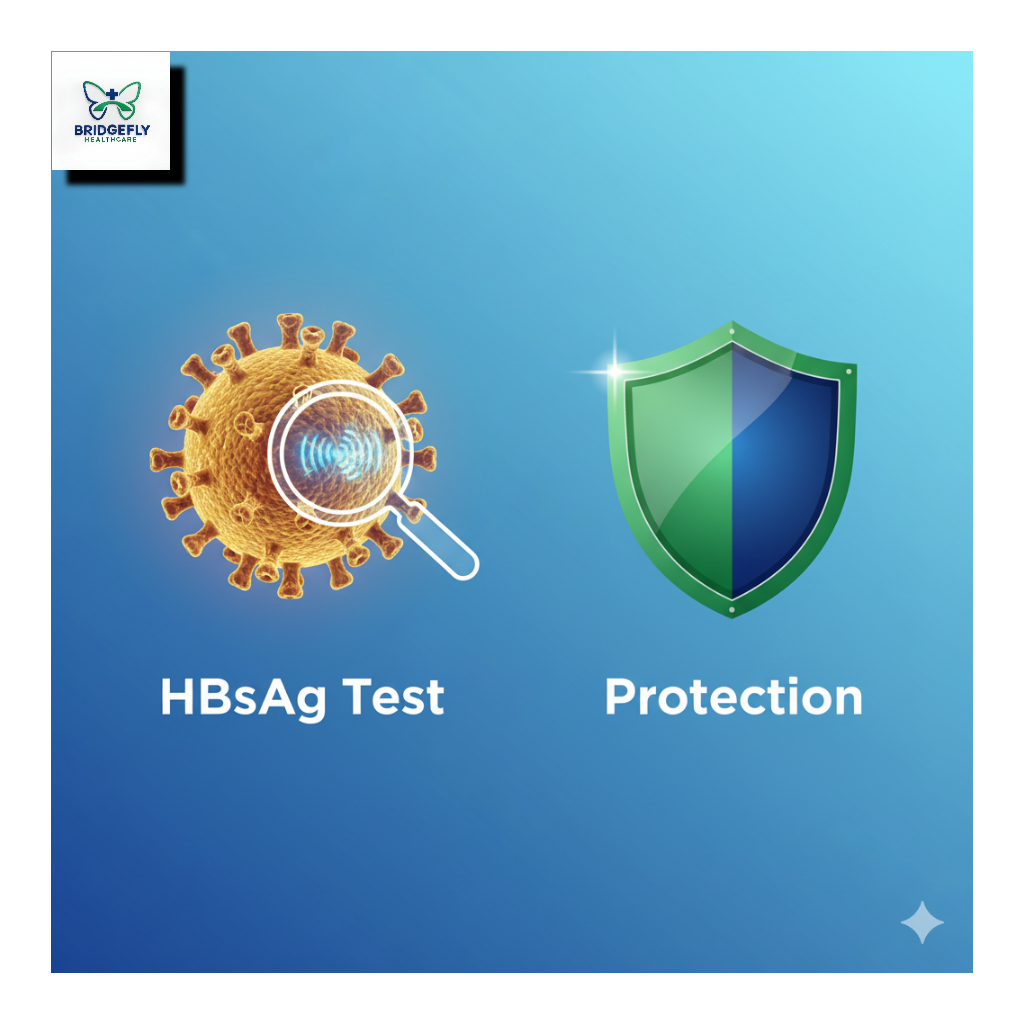
HBsAg Test
₹300.00
Hepatitis B surface antigen (HBsAg) is a protein found on the surface of the hepatitis B virus (HBV). The presence of HBsAg in the blood indicates an active hepatitis B infection and is one of the primary markers used in the diagnosis of hepatitis B. Typically, HBsAg appears within the first few weeks of exposure to the virus and can remain detectable for varying periods, depending on the individual's immune response and the progression of the infection. There are several critical aspects to understand about HBsAg, including its role in the infection process, the implications of its presence, and its significance in the clinical setting. 1. **Role in Hepatitis B Infection**: HBsAg is the first detectable viral antigen in the bloodstream during acute hepatitis B infection. Its appearance signifies that the virus is replicating and the individual is infectious. In contrast, the disappearance of HBsAg, usually followed by the presence of antibodies to HBsAg (anti-HBs), indicates that the infection has resolved, and the individual has developed immunity. 2. **Diagnosis of Hepatitis B**: Testing for HBsAg is a standard procedure in evaluating suspected hepatitis B infections. A positive HBsAg test is crucial for diagnosing acute or chronic hepatitis B. If someone tests positive for HBsAg for more than six months, it is often classified as chronic hepatitis B disease. 3. **Types of Hepatitis B Infections**: The presence of HBsAg can indicate different phases of hepatitis B infection. In an acute infection, HBsAg positivity is usually transient and will eventually be cleared by the immune system. In chronic hepatitis B, HBsAg may persist for years or even a lifetime, increasing the risk of liver disease and hepatocellular carcinoma (liver cancer). 4. **Implications of HBsAg Status**: A positive HBsAg test means the individual is infectious, which is critical for public health considerations. Individuals who are HBsAg positive may need further evaluation to assess liver function and potential treatment options. Conversely, healthcare providers often suggest vaccination against hepatitis B for individuals who are HBsAg negative, ensuring they are protected. 5. **Management and Monitoring**: For those who are chronic HBsAg positive, regular monitoring is essential to manage their health effectively. Practitioners recommend liver function tests, serological markers, and sometimes liver biopsy to assess the extent of liver damage or inflammation. Treatment options may include antiviral medications like tenofovir or entecavir, depending on the severity of the disease and viral load. 6. **Prevention Strategies**: Vaccination remains the most effective means of preventing hepatitis B infection. The hepatitis B vaccine prompts the immune system to produce antibodies against hepatitis B surface antigen, thus providing immunity without exposing individuals to the virus. It is especially recommended for those at high risk, such as healthcare workers and individuals with multiple sexual partners. 7. **Societal Impact**: The global burden of hepatitis B remains significant, with millions of people living with chronic hepatitis B worldwide. Countries are implementing strategies to increase vaccination rates, improve screening programs, and enhance access to care for those affected. Awareness campaigns focus on reducing stigma associated with the disease and promoting safe practices to prevent transmission. In conclusion, HBsAg is a vital component in understanding hepatitis B infection dynamics. From its role in diagnosing the disease to its implications for treatment and prevention, HBsAg serves as an essential marker for both healthcare providers and patients. Continued research, education, and prevention strategies are fundamental in addressing the challenges posed by hepatitis B and improving health outcomes globally.
Hepatitis B surface antigen (HBsAg)